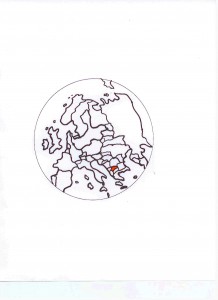SERBIA
A. THE COUNTRY
The Republic of Serbia is a landlocked country located at the crossroads
of central and southeastern Europe. Serbia has two autonomous
provinces, Vojvodina in the north and Kosovo in the south. In 2008, the
parliament of Kosovo declared independence. Serbia regards Kosovo as
its autonomous province governed by a UN Mission. The response from the
international community has been mixed. Serbia is a parliamentary
democracy and relationships with the world have been normalizing
following many years of public relations problems. The Balkan wars left
a range of unresolved issues: the devastated economy, a fragile
democracy, and poor relations with neighbouring countries and treatment
of minority groups (including in Kosovo). A stubborn government and
entrenched ethnocentrism in the main faith groups make political and
religious structures part of the problem.
B. THE PEOPLE
The population of the two provinces is ~7,771,500 and official language
Serbian. Many Serbs moved as refugees to other parts of Europe, North
America and Australia. The following figures do not include Kosovo:
~89.6% are Slavic, ~10.4% Other (Hungarian, Romani, Albanian, Romanian).
C. RELIGIONS, CHRISTIANITY AND PENTECOSTALISM
Constitutionally, there is freedom of religion, but with preferential
treatment accorded to the Orthodox Church. A controversial religion law
makes registration and activity by non-traditional groups very
difficult. The following includes Kosovo:
~80.37% claim to be Christian, ~16.1% Muslim, ~3.5% Non-religious,
~0.02% Jewish. In the Christian category:
~73.72% are Orthodox, ~5% Catholic, ~1.42% Protestant, ~0.24%
Independent, <0.01% Anglican.
Evangelicals represent ~0.6% of the population.
Charismatics represent ~0.4% and of those ~0.3% are Pentecostals.
Donna Siemens
References:
http://en.wikipedia.org
Operation World, Jason Mandryk. Colorado Springs: Biblica Publishing, 2010.

